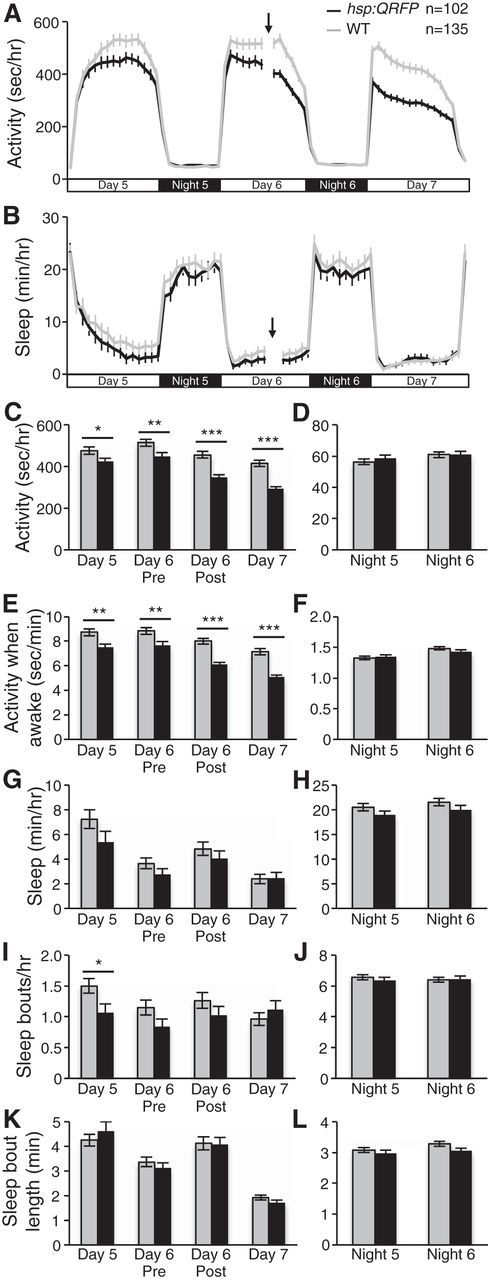Figure 8.

QRFP overexpression decreases locomotor activity during the day. A, C, Tg(hsp:QRFP) larvae (black) exhibit less locomotor activity than their WT siblings (gray) on Day 5 and before heat shock on Day 6 (Day 6 pre), presumably due to leaky expression from the hsp promoter. However, transgenic larvae are much less active than controls during Day 6 after heat shock (Day 6 post) and exhibit an even stronger phenotype the following day. A, D, QRFP overexpression does not affect locomotor activity at night. E, F, QRFP overexpression also increases locomotor activity when awake during the day but not at night. B, G–L, QRFP overexpression does not affect the total amount of sleep (B, G, H), or the number (I, J) or length (K, L) of sleep bouts during the day or night. Time of heat shock is indicated by arrows and gaps in activity (A) and sleep (B) line graphs on Day 6. Line and bar graphs represent the mean ± SEM. n indicates the number of larvae analyzed. *p < 0.05, **p < 0.01, ***p < 0.001 for pairwise comparisons of Tg(hsp:QRFP) and WT larvae using Student's t test.
